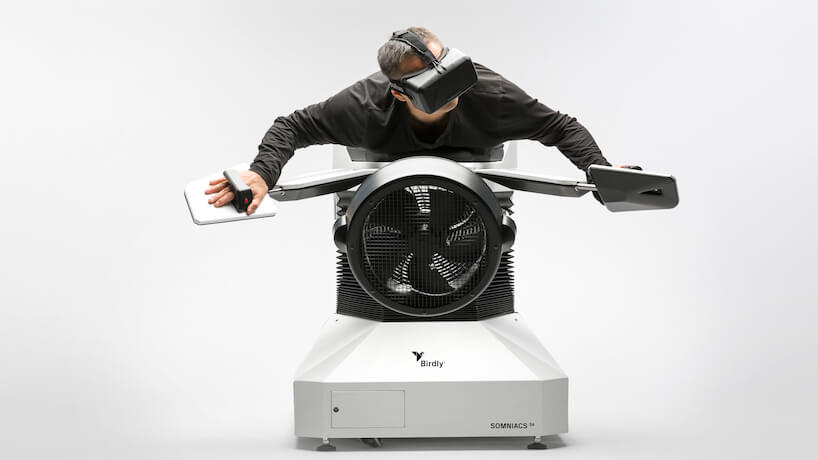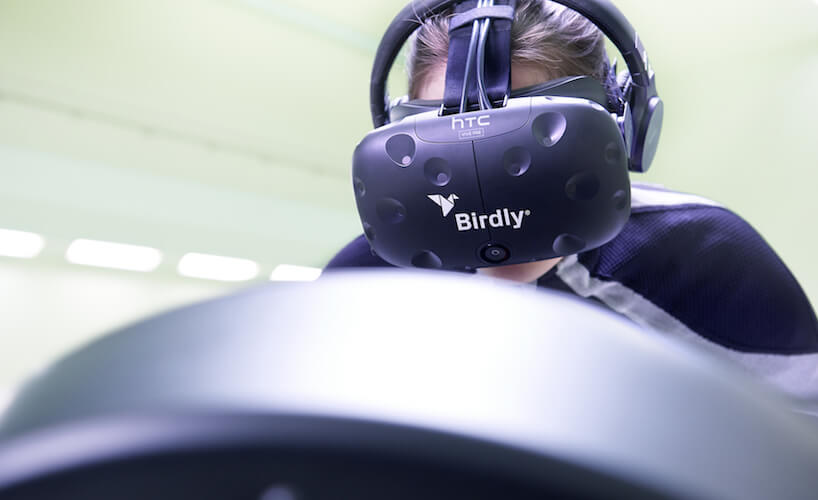The business-events industry has been asking plenty of questions about virtual reality. Will the technology replace the need for site visits? How can medical organizations use VR to create more valuable educational experiences for physicians? What if the continued shift to immersive digital experiences drives attendees to simply stay home with their goggles on their heads? After I experienced Birdly at The Field Museum in Chicago recently, business events may want to focus on another discussion point: How can virtual reality revolutionize sponsorship opportunities?
Birdly is a full-body VR and robotics experience designed to make users feel like they’re flying. I laid flat on the machine — arms spread wide, goggles over my face, and wind in my hair thanks to a fan mounted in front of me — and flew over Manhattan. I flapped my arms to soar higher with planes and helicopters, or pointed down to dive closer to the New York City ground. Throughout the three-minute experience, billboards and building signs were everywhere I looked. While the Empire State Building and other iconic landmarks stay the same wherever Birdly goes, Andy Wood, senior vice president of D3D Cinema, a distributor for Birdly, told me that those signs can look very different depending on the event.
“There are signs all over the city, and all those are easy-to-change graphic files,” Wood said. “So you can customize the entire experience with branding for sponsors who love to be in the buzz-worthy VR space.”

The possibilities for VR sponsorships seem virtually limitless. (No pun intended.) For example, Wood highlighted an example of embedding surprise Easter eggs in a recent Birdly experience sponsored by a Swiss airline. As users flew over New York, a billboard with the airline’s branding twinkled to alert them that a hidden experience was waiting behind the billboard. Then, flyers could travel directly into the billboard — thankfully, the crash doesn’t feel real — and be teleported to the Swiss Alps for a 30-second micro-experience.
But the sponsor messaging isn’t confined to the individual in the machine. Thanks to a screen that displays what the user is seeing, onlookers discover the same perspective and sponsors can reach a bigger audience.
SEE ALSO: 5 Next-Gen Technologies That Already Are Changing Meetings
Soaring in the Event Space
Wood told me that Birdly is causing strong updrafts for exhibitors at trade shows and private events. “We were just at SXSW, and this was regularly mobbed in the expo hall,” Wood said. “And we’re receiving a lot of requests from organizers who want to rent the machine for an evening or a day.”
A one-day rental costs from $8,500 to $9,500. The fee varies based on transportation costs, and it includes a technician. The additional requirements are simple: a 10-foot-by-10-foot space and a standard 20A power outlet. Currently, the only available experiences are flying over New York and San Francisco, but Wood said that there will be additional options soon. With more destinations in development, and dinosaur and underwater experiences on the horizon, Birdly seems to be on a flight path for success.
Even if you aren’t ready to put VR goggles on your sponsorship packages, you can still take steps to keep your partners happy. Check out “Tools for Making Sponsorships Work” in Convene.

